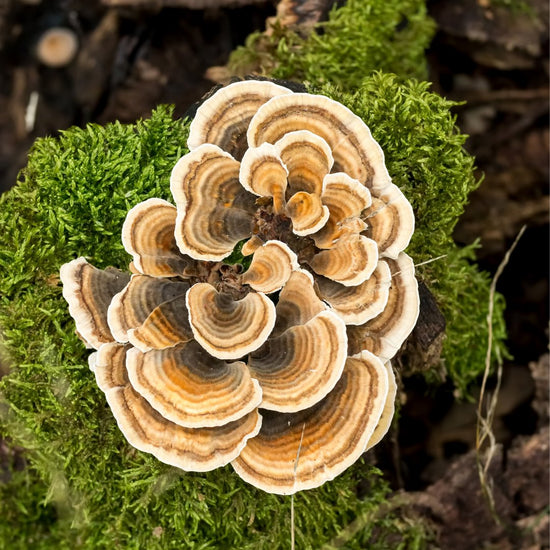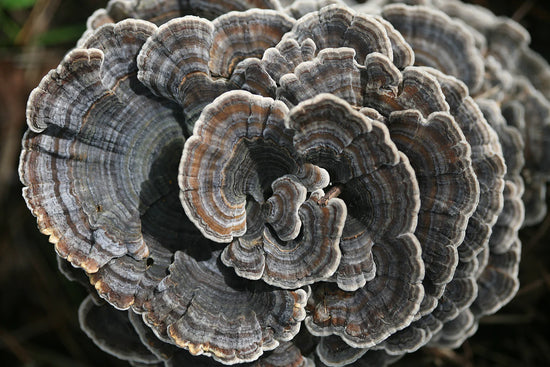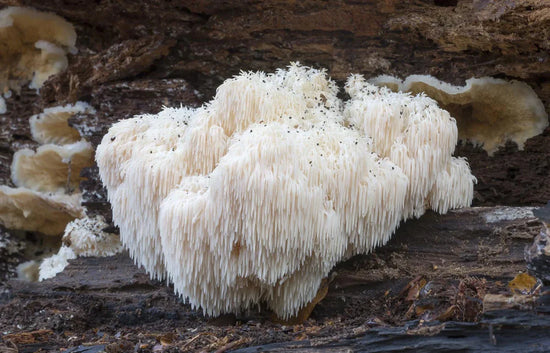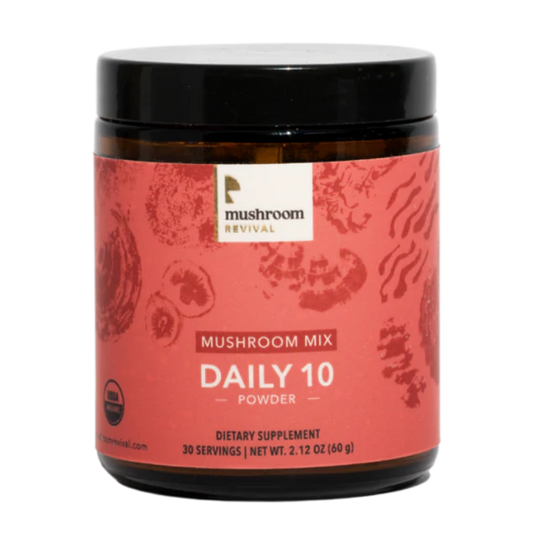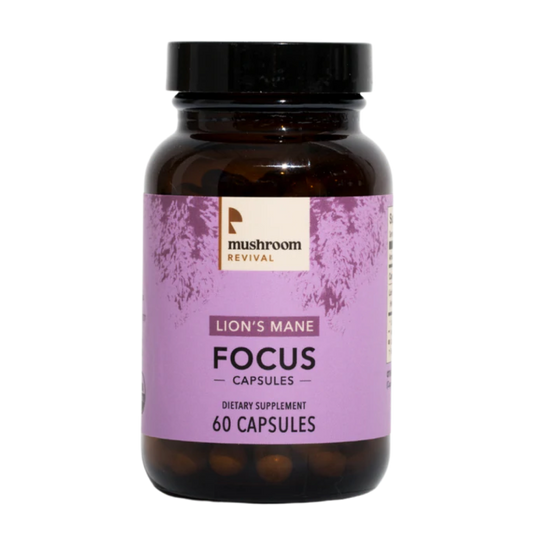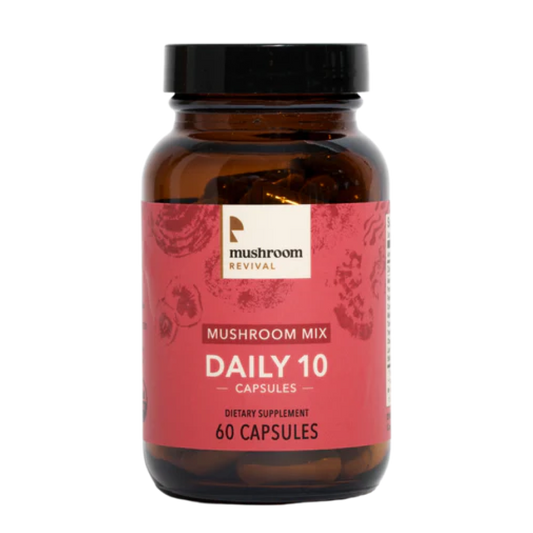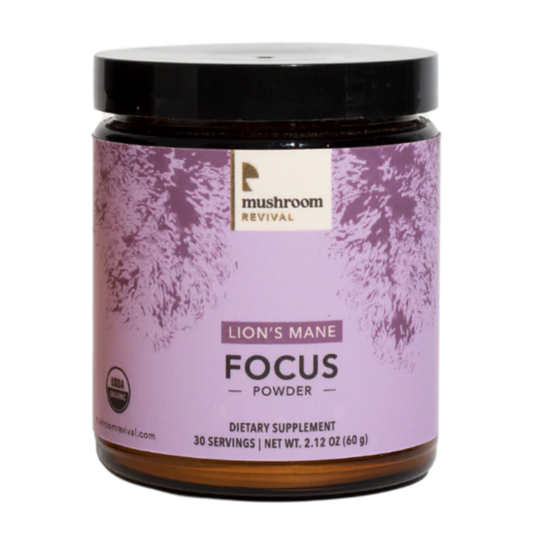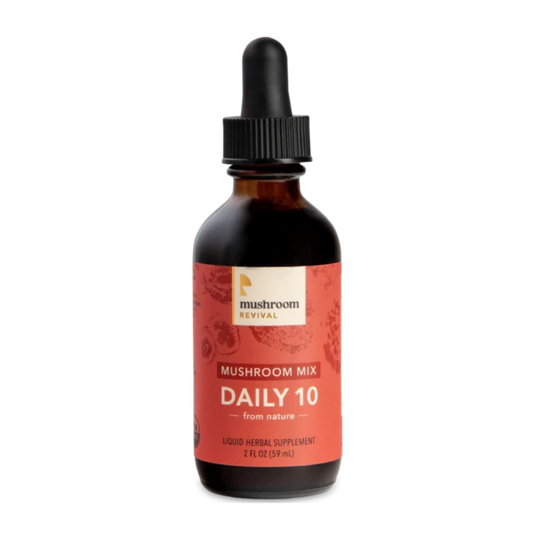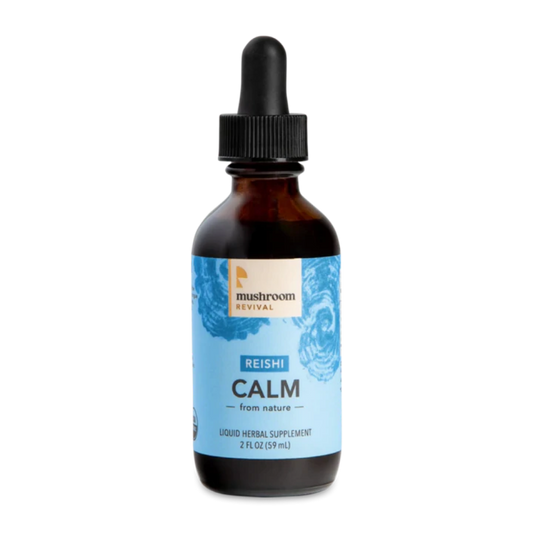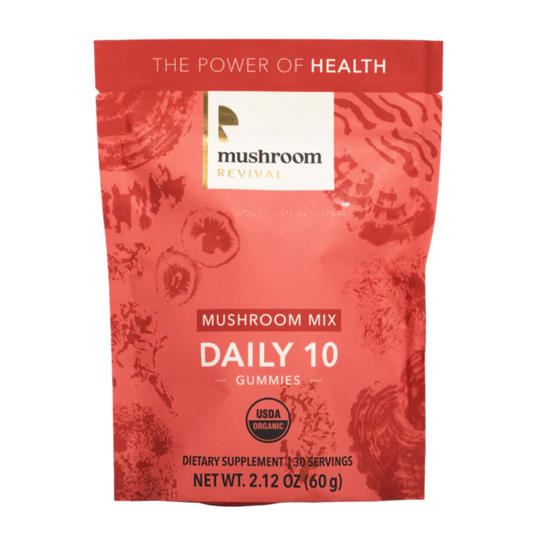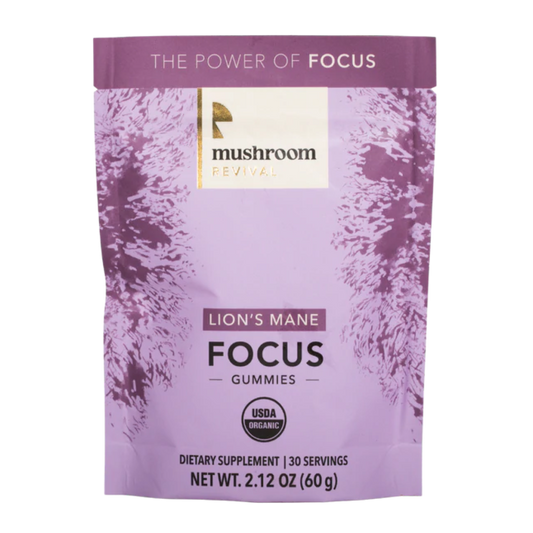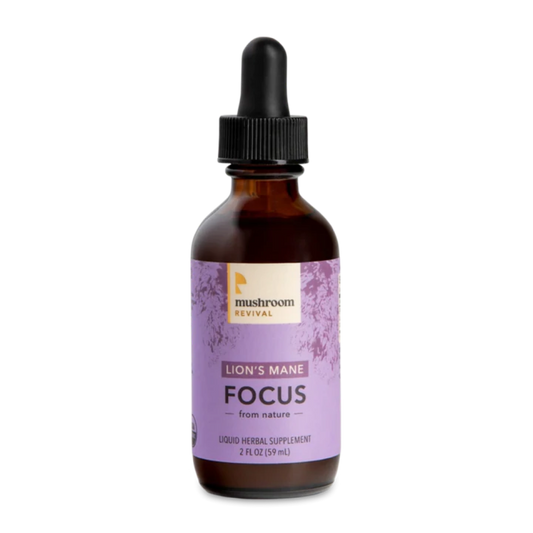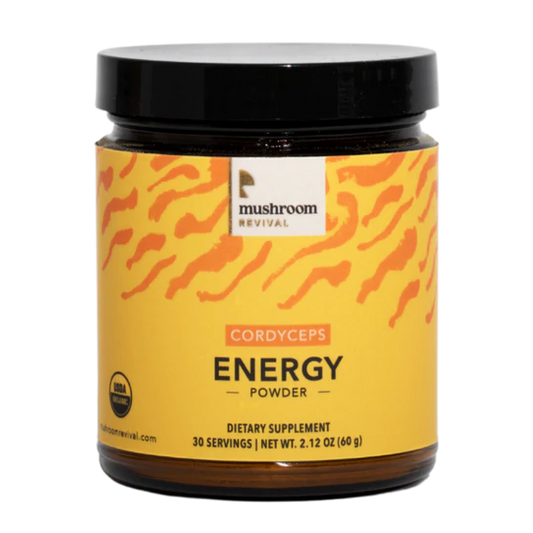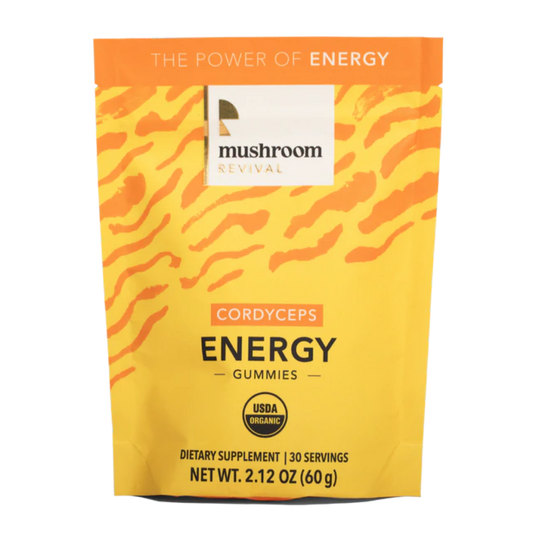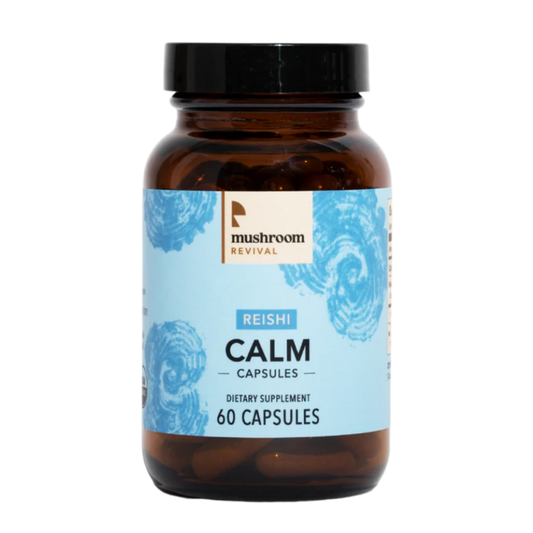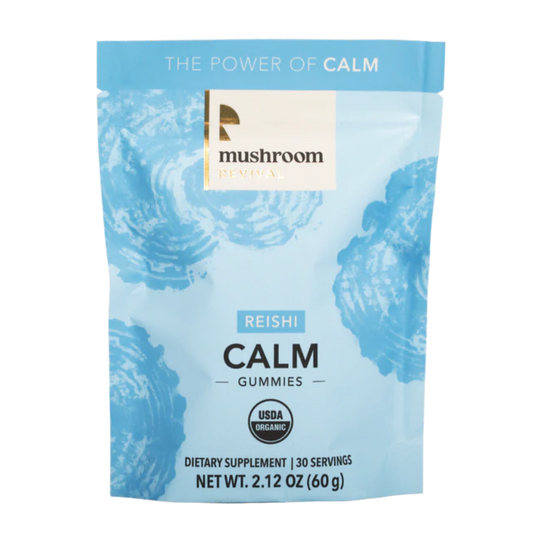A Quick Dive into Marine Fungi
Can Mushrooms Grow Underwater? Discover the World of Underwater Fungi
Meet Dr. Cassie Ettinger who studies ocean fungi and talks about the mysteries of underwater mushrooms.

Podcast Topics Covered:
- - Defining marine fungi
- - Recognizing the infancy of Marine Mycology
- - Evolution of fungi from water to land
- - Surveying, sampling, and growing ocean mushrooms in the lab
- - Genomics of ocean fungi
- - Seagrass-associated fungi and seagrass microbiomes
- - Pigmented fungi
- - How citizen scientists can advance Marine Mycology
- - Chytridiomycota, oomycetes, aspergillus, slime molds, marine lichen
Can Mushrooms Grow Underwater? Introducing Marine Mycology
Underwater fungi exist. And we know almost nothing about them. These elusive water-dwelling fungi offer valuable insight into evolution, phylogenetics, ecological health, drug discovery, remediation, and more. We welcome one of the few researchers who are surveying these fungi to share her findings and usher other researchers into the mysterious, essential world of ocean fungi.
We discuss the nascency of the field, how research is currently being conducted, why Marine Mycology is seeking more scientists, and why looking to the ocean for new fungal species is a worthy endeavor.
About Dr. Cassie Ettinger

Cassie Ettinger is a postdoctoral scholar in the Department of Microbiology & Plant Pathology at UC Riverside advised by Dr. Jason Stajich. She received a Ph.D. in Integrative Genetics and Genomics at UC Davis studying the seagrass microbiome and seagrass mycobiome.
Cassie received her BA in Molecular and Cell Biology with a Genetics, Genomics, and Development emphasis from UC Berkeley in the spring of 2013. While at UC Berkeley she participated in research in Dr. Ellen Simms’ lab on multiple projects involving rhizobia-legume symbiosis. Cassie’s current research interests include plant-microbe interactions, the co-evolution of microbes and their hosts, and marine fungi.
Cassie’s Research with Ocean Mushrooms
Cassie is dedicating much of her resources to discovering associations with fungi and seagrasses. The reason why Cassie wanted to hone in on seagrass is because they are a species that "reentered the marine environment from land." So, they have a strong evolutionary background
Moreover, they didn't evolve into the water just one time. Seagrasses have moved from marine and land environments more than once. In total, Cassie and her team are most interested in finding out if the seagrasses are forming "novel associations with marine fungi." That is, they want to find out if the seagrasses are bringing fungi back into the ocean with them.
The first thing that Cassie had to do for her research was survey the system. She had lots of questions to answer on the activity, diversity, and location of the seagrasses. She started her research in Bodega Bay, California where she utilized DNA sequencing to find fungal marker genes. Cassie focused her energy on eelgrass, which is abundant in the Northern Hemisphere. Side note, if you are in that area, during low tide you can walk on the seagrass beds!

Next, since most of the data on fungi species are based on mushrooms that are land-based, Cassie encountered challenges trying to classify DNA sequences based on samples taken from the ocean. Luckily, she grabbed a larger piece of the DNA sequence by "designing... specific targeted primers based on [her] smaller sequence" she acquired. This allowed her to identify a species in the Bodega Bay called Chytridiomycota.
In Cassie’s second study, she took samples from the water and cultured them in a lab. After identification, they discovered they found a lot of penicillin, which is a type of blue mold. Cassie and her team have additional research studies that are only mentioned in the podcast. We encourage you to listen to it!
In the podcast, Cassie talks about the novelty of Marine Mycology. It is important to note that the field is very new to science. There are so many new discoveries to be made and questions to be answered.
“This is one of the biggest questions… in the Marine Mycology… [are] the fungi that we are seeing active?" - Dr. Cassie Ettinger
Studying Underwater Mushrooms
A Benefit to Marine Mycology: They Provide Insight into Ecosystem Health
Associations between marine organisms are an important part of ecosystems. Monitoring these associations and the changes they undergo provide valuable insight into the effects of climate change.
In many cases, fungal associations are the key to a plant’s survival, especially in harsher environments like the ocean. Microscopic dynamics are the first to change when an environment is insidiously impacted. Monitoring these biomes may offer a deeper understanding of how they are changing, and hopefully, how to maintain or heal suffering areas.
In essence, ocean mushrooms may have the capability to help the world with issues such as climate change. Not only that but underwater mushrooms have beneficial relationships with other plants too. They can provide a plant with better protection mechanisms. Scientists believe that these resilient properties can help heal other areas of suffering in regards to the world such as mycoremediation.
Mushrooms Are Extremely Resilient

The mushroom Psathyrella aquatica was found growing in a freshwater lake. This was a remarkable case of underwater fungi because it was an actual fruiting body, or mushroom, that flourished in the water. Non-mushroom forming fungi are exponentially more prevalent in aquatic environments but are just as essential to the ecosystems.
However, marine fungi are so poorly understood that scientists struggle to add them to the existing taxonomy of all fungi. That is, the encyclopedia of mushroom species. So, what do we know about them?
1. They coexist with plants.
Most ocean fungi are found living on or in plants. Mycologists know the term endophytic, meaning it lives inside the plant. In the same way, terrestrial fungi benefit plants on land. It is a common arrangement.
The fungi are living between the cells of the plants, and in some cases, penetrate through the cell wall. This is usually a mutualistic relationship where both the plant and the fungus benefit by exchanging nutrients. And it turns out we find them in seagrasses (thanks, Cassie!) and other aquatic plants.
But they don’t stop at plants — ocean mushrooms have been found to exist on mutual terms with marine animals, diatoms, and phytoplankton.
2. They can swim.
Like other microorganisms living in a liquid world, the Chytridiomycosis fungi have a flagellum, which is like a small tail that allows them to swim and move about the waters. Chytridiomycota, or chytrids (Greek for “little pot”) are some of the most prevalent species surveyed in the oceans so far.
3. They are extremophiles.
Species of fungi are found living in all the most intense areas of aquatic life. Some species withstand immense pressures of the deep sea, high salt content, ice, geothermal pools, and far into the sediment where there is no dissolved oxygen.
What’s more impressive than thriving in these extreme conditions is having left, evolved to thrive on land, and then returned. Evolving in the ocean is one thing, but making a land-to-sea transition is considered to be one of the harshest transitions an organism can make.
Therefore, making new discoveries of fungi in all their extreme environments is of high importance in the science world — especially underwater mushrooms. Getting to know new species and adding them to the fungi taxonomy is the work of a Marine Mycologist.
The Needs of Marine Mycology
“We need some passion in [the Marine Mycology] field.”— Dr. Cassie Ettinger
Interestingly, more than 80% of the ocean has not been discovered. And as Alex mentions, it is likely that "99.999% of marine fungi haven't been discovered." Marine scientists are in need of more people that want to map and research the ocean.
New discoveries can help solve pollution problems or advance the medical field. Yet, discovery is simply a beautiful thing that nature provides. Finding out something new that exists is wonderful — right?
To help make new ocean discoveries such as underwater fungi species, our guest and researcher, Dr. Cassie Ettinger, encourages the following three things:
1. Survey the ocean fungi.
Scientists barely know what's out there. If you live in a watery place and happen to have a hobby or profession for microbiology, consider sampling these environments.
Scientists want compelling observations from pros and citizens alike. If you see something fungal in the watery environments, take a picture, then share it. All fungi-lovers and environmentalists should acknowledge fungal marine life.
If you’re interested in becoming a Citizen Scientist — keep reading!
2. Study the activity of underwater mushrooms.
What percentage of these fungi are active? Studying their active metabolites and tracing them to a specific fungal origin is important. Then, researching their chemical influence on the ecosystem is also vital. It's possible that easy-to-find fungi aren't the most biochemically active. Reversely, those that have gone undocumented may serve a critical contribution.
3. Build genomic resources.
Cassie reminds us that researchers can only do so much with novel organisms. As mentioned above, we have a hard time adding them to the fungal tree of life. The sequences that have been done are incomplete, and researchers are having to work with a fraction of the 250 base pairs in their DNA.
“[To] do all three of these things we need… more support, more money, and more scientists.”— Dr. Cassie Ettinger
As Cassie shares, if you are listening to this podcast or reading this blog and are thinking…
“Marine Mycology? That’s for me!”
Then be sure to reach out to Cassie because there are labs around the world that are conducting this work, right now. You can become a Marine Mycolgist and help explore the ocean!
How You Can Help as a Citizen Scientist

A citizen scientist is someone who is a member of the general public who collects and analyzes data relating to the natural world. Oftentimes, they collaborate with professional scientists on specific projects.
If you are interested in surveying the ocean and advancing Marine Mycology, then connect with Cassie and other marine scientists online! For more information, see the bottom of this blog post.
Firstly, you can get involved with Marine Mycology by spreading the word that ocean fungi do exist! By sharing the podcast or this blog post, you can further spread the news. Also, there is an Ocean Sampling Day that is a more focused and annually recurring event. It isn't just about marine fungi, however, with more interest in the "marine fungal realm," we can create more underwater mushroom activities and events that will further the exploration of ocean mushrooms.
Finally, there are tools that citizen scientists can use to make discoveries themselves. For example, the Fold Scope is a microscope that functions with origami. They are super affordable. And if you happen to be involved in education — they can be free or discounted.
So, if you are interested in dipping your toes in Marine Mycology, get a Fold Scope, use your smartphone, and take snapshots of samples from the water. If you find something interesting, post it on iNaturalist or share it with a scientist on Twitter.
The more people that begin documenting microscopic findings, the more opportunities we have to get in contact with something really cool — like new marine fungi species!
Citizen Scientist Resources
- Fold Scope: https://www.foldscope.com/
- Instant Ocean: http://www.instantocean.com/products/sea-salt-mixes/sea-salt-mixture.aspx
Connect with Dr. Cassie Ettinger
- Cassie’s Website: https://casett.github.io/index.html
- Cassie’s Twitter: https://twitter.com/casettron
- Jonathan Eisen’s Lab: https://phylogenomics.me/people/cassie-ettinger/
TRANSCRIPT
What is going on mushroom family Welcome back to another episode of mushroom revival podcast. We are unbelievably obsessed with the wonderful, wacky world of mushrooms. We're bridging the gap between you our lovely, exuberant special listeners and the wonderful wacky world of mushrooms and fungi. We bring on guests and experts from all around the globe to geek out with us and go down mushroom rabbit holes to explore how incredible mushrooms are. We are mushrooming the culture around mushrooms and we're so excited to swim or surf into this next episode. Let's get it started.
Lera 1:09
All About marine fungi. We are welcoming Dr. Cassie editor who is currently pursuing her postdoc at the University of California Riverside in the department of microbiology and plant pathology. Welcome, Cassie. Thanks so much for giving us some time.
Cassie 1:25
Yeah, thanks for having me here. It's been I mean, it'll be a pleasure, I'm sure. Yeah, so I'm a postdoc at the University of California Riverside. In Dr. Jason stages lab, we study fungal phylogenomics. So lots of looking at fungal trees, thinking about their evolutionary history and doing comparative genomics to kind of get at their function. I previously was a graduate student and Jonathan eisenerz lab at the University of California Davis, where I studied the seagrass microbiome and also looked at the fungi associated with seagrass, which I'll talk to you guys more about today.
Lera 2:02
And we always like to ask the origin story and what got you into funneling your research into microbiology, but then furthermore, into fungi?
Cassie 2:11
Yeah, you know, it depends on if you ask me or my mom, how this got started, she'll say that she bought me a microscope when I was really young, and that I became obsessed with looking at microscope slides and looking at, you know, these things like pond water under the microscope, and that it was all her and her idea. But um, you know, I don't remember any of that. Sorry, mom.
Alex 2:32
Throw her under the bus.
Cassie 2:34
I mean, I do you know, I support education for children of STEM. And so I do think that that probably played a role. But it was really later in my education I was getting I read Jurassic Park, I was really interested in kind of the evolution of humans and how, you know, how do we get here? How did we become what we are? And I kind of went into this into undergrad thinking about evolution, thinking about how do we study evolution. So I started thinking more and more about genetics. And then I got the opportunity to study in the lab of Dr. Ellen Sims at the University of California, Berkeley. And so she studies plant microbe associations, specifically looking at some bio system mutualistic relationships between these plants and these bacteria. And so that got me thinking about what how organisms are interacting and how cool and different bacteria are, how a lot of life on this planet would not exist without relationships with bacteria. So humans, we have the mitochondria that used to be a bacteria that an ancient ancestor of humans and golf, right. And then now we have this relationship that's so intertwined. And what we are, that's how we have our energy plants. Same thing happened with chloroplasts. And so thinking more about how these interactions between different organisms evolved through time. And thinking about microbes specifically is how I got into graduate school. And so I joined Dr. Jonathan eisenerz. Lab, he's this big microbiome person in our lab there. We did microbes on everything, right? Cats, koalas, the space station, different buildings, seagrass frogs. And so when I joined, he just gotten a huge grant to look at the seagrass microbiome. And so I was like, okay, great plants, microbes are interactions, thinking about what they might be doing, thinking about how did these interactions evolve through time? This is great. And then when I started reading the literature, looking at what's been done looking at what we know, it was really clear that we knew nothing about the fungi associating with these sea grasses, these marine plants. It was just it was kind of shocking, really that because on land we know that fungi especially mycorrhizal fungi are very Really important for plant nutrient uptake. And were really important for the movement of the ancestor of plants onto land. And because of that increased nutrient uptake that they're getting from this association with these fungi. And so the fact that nobody really looked to see, you know, do the sea grasses have those mycorrhizal fungi? And if they don't, are they still associating with fungi? What's happening? That was kind of shocking to me. And also very exciting, right? At the kind of the wild west of looking at something that nobody else had looked at before. And so that's kind of how I got involved with marine fungi. And I've kind of stuck there because it is this really exciting kind of novel area that people have just kind of ignored for a very long time.
Alex 5:44
Yeah, I mean, most mycology that you think of, or mycologists their terrestrial basket fillers, you know, they're they're out porcini hunting in the mountains, but you don't think of people on a, on a canoe or something. Or scuba diving, looking for fungi. And surprising I mean, what 71% of our planet is water. And 97% is the ocean. But you know, there's rivers, there's creeks, there's ponds, there's lakes, there's water in our atmosphere, there's, there's so much water on the planet, and we don't really, or at least I don't associate water with fungi. But you know, and that's so exciting. It's why we're unbelievably passionate about mushrooms and fungi is this field that it's barely even scratched yet it has unbelievable amount of potential. And so can you give our listeners maybe a little one on one? And for us a little one on one on marine fungi? What are they? I'm sure people are imagining little cap and stem mushrooms floating in the ocean or something like that. But what exactly is going on?
Cassie 6:57
Yeah, so I think probably most of marine fungi, or at least what we know, so far, is going to be microscopic. And so a lot of these associations are not going to be able to see with the naked eye. So unfortunately, we're not gonna have these beautiful mushrooms that we're just finding and you know, maybe one day we will find them, maybe we just haven't found them yet. I do know that there are some freshwater mushrooms that do exist and that have been found. So it's only a matter of time really, if you think about it. But yeah, so these are going to be microscopic organisms they're going to be probably living for the most part on are inside of other organisms. So honor and seagrass on our end, corals, honor and fish in their guts, or they're going to be living in their tissues. And then they're going to also be some fungi that are swimming around in the actual water system. And a lot of these are going to be associated with other organisms and some of those organisms you might not be able to see with the naked eye either. So there's a lot of fungi associated with diatoms, which are microscopic, you carry out there are some a lot of fungi associate with phytoplankton. And so these associations are things that are really important, especially for our world, and especially thinking about our changing ecosystem and climate change. And but we're not actually seeing them with our eye. And so you do need some sort of microscope to see them.
Lera 8:19
And can you describe where these fungi are found on the taxonomic tree? And if they are kindness and filamentous, or more Eastlake, or if they have a flagella to help them swim? What do they look like?
Cassie 8:31
Yeah, so what has been done is very limited, but what we're seeing so far is that we have a lot of kind of these more basal lineages of fungi. So a lot of chytridiomycosis to some of these lineages that we don't know a lot about like a filetto my Kota and Rosella mycota. These are the kinds of lineages that we're seeing a lot more of than we might expect. And there are also ascomycota, and basidiomycota. Often these are going to be found associated with organisms. And so they're going to be more found in yeast like morphology, or they're going to be hyphae, like so a lot of these organisms form pseudo high fees, so they're not true hyphal stages. And so you're gonna have a lot more of these kind of yeast or sporulating. fungi in terms of a flagella, that'll just be the kitcher do my Kota, best study on my Kota and ask them I could have lost that. So they have a flagella for their spores. And so that spore comes from around and then find a host usually where they'll form their sexual stage and release more spores.
Alex 9:37
Putting the theory of panspermia aside that mushrooms came from space or fungi came from space. it you know, most of life came from the ocean. And so are these marine fungi, the ancestors of terrestrial fungi or land, mushrooms and fungi that we see around like chanterelles and things like that.
Cassie 9:57
Fungi at some point would have come on to land I believe that was before ask him my code and the city on my Kota evolves and they evolved during that transition onto land or approximately there and then an evolutionary time. So things like Kindred are going to be more closely, or at least going to be more similar in their traits to maybe ancestral fungi, which would have been marine. And then we actually have a lot. There are two or three lineages in the city of myco, in the ASPCA myco, that have actually started to make this transition back into the marine environment. And we see this happening several different times, especially in the ASCO, my coda, and a couple of different lineages. And so it's not just fungi evolving. And then coming on to the onto land, we're actually seeing land fungi returning to the marine environment, which is one of the harshest environments to re enter. So it's kind of crazy that they're doing this so many times across these different lineages of fungi, it kind of speaks to their ability to adapt, and have these kind of really cool mechanisms of not only just adaptations, but different kinds of metabolites and products that they're making. They're very adaptable. They're very hardy. It's kind of crazy, especially when you compare it to you know, the only animal that ever went back into the marine system was was whales really, right? That's kind of like, and then for when we think about plants, sea grasses are the only flowering plant that has made that transition. But when you look at fungi, there are so many more species that have made that transition back into the marine environment. And it's kind of a testament to fungi in their adaptation potential.
Alex 11:39
I had no idea that whales would back into the water, they were on land at one point, that's nuts. whales are crazy. They just hold their breath, though, and they're huge. I cannot believe they haven't evolved gills. And that just blows my mind that they live in a place that can't breathe.
Cassie 11:59
Why? Because the evolution of lungs was so difficult that going back it was easier to just develop a blowhole than to redevelop gills.
Lera 12:10
Hey guys, if you love the show, and want to continue getting tantalizing mushroom content such as this, please consider supporting us by going to mushroom revival, calm and purchasing one of our amazing mushroom products.
Alex 12:23
This is how we keep the lights on this is a total passion project, we do not offer any outside advertisers. And this is totally revolutionized our health, we want to spread the mushrooms far and wide in every corner possible. If you're listening to this, we will offer you a special coupon code that we're not offering anybody else. If you're listening to this, there's a little easter egg that you just found. You got to open that easter egg as well and put it into your cart to find out a special offering that only you will get. We love these products. They help revolutionize our health. And we want to share that health and abundance with you guys who equally love mushrooms as much as we do. So when you go watch a movie, you get a bowl of popcorn, obviously. So when you listen to mushroom podcast, you get a mushroom tincture, pumping through your veins pumping through your eardrums, you are a mushroom help the mushroom revival. We love you guys so much back to the show.
Lera 13:38
That is fascinating. And obviously, the fungi that are living in the ocean must be extremely salient, tolerant, and they're living underwater and that most of the fungi that we know here on land, they need access to oxygen within the air. So are these fungi getting oxygen? Or are they anaerobic? Or do they have some sort of system in place to allow them to get the oxygen from the h2o that they're living in?
Cassie 14:05
Yeah, so there's a lot of dissolved oxygen in the water column. And so that's how like fish will get their oxygen, they're just taking the dissolved oxygen through their gills, fungi are able to just absorb that dissolved oxygen in the water column as well. As you get down into the sediment in the sand and you go start to go deeper. So if we start looking at some really deep sediment from really deep in the ocean, that's where you're gonna start to find no oxygen. And that's where we might start to find some of these anaerobic fungi. We know from human gut studies that there are anaerobic fungi that exist. There's a limited number of them so far that have been identified. And I think that as we start to learn more about the marine ecosystem, and as we start to learn more about kind of fungi generally, especially in some of these environments, where they've been under studied, we might find, you know, a significant number more some of these anaerobic fungi that are doing something very good In order to survive.
Alex 15:02
That's a bummer. I was hoping you'd say they have a blowhole. And it's funny because I haven't had much research into marine fungi. And it's shocking to me that we've only discovered an estimated 5% of the ocean, which is mind blowing to me. And I'm afraid of deep ocean because of that fact right there. I there, I believe there's some crazy stuff down there that's waiting to eat me. But I'm because there's only 5% discovered, you know, is that a combination with so little research? So, so little mycologist actually doing this research? Do you believe that there's just an incredible amount of species that we've just yet to uncover? and marine biology?
Cassie 15:56
Yeah. Oh, 100%. You know, we know so little about the ocean generally. And we know so little about marine fungi that there's got to be, you know, 1000s upon 1000s, if not millions of species, as it is, when we think about land fungi, there are between 100,200 1000 species that we know about and have kind of classified. And it's estimated that really there should be about two to 3 million fungal species on land. And so if we don't know that little about terrestrial fungi, and we already know so little about marine fungi, only 1500 approximately have been classified that way so far. You know, it's, it's anybody's guess how many there really are. So yeah, I would be really excited to be able to know in like 50 years, or 100 years.
Alex 16:43
There might be a fungi with a blowhole. There might be yet.
Cassie 16:49
There's a mushroom with a blowhole. I mean, your wildest dreams could come true with gills it has been.
Lera 16:56
Yeah, exactly. So how do you like have you personally found any new species? And how do you search for these things? Are you just going to seagrasses and basically swabbing them on a petri plate and doing PCR? What does this look like? Yeah, so
Cassie 17:12
I've done two kinds of studies. One is to try and get culture the fungi directly from samples in the marine environment and see what we get. The problem with this approach is that it's going to prioritize things that are fast growing, and things that we already know what they are, because the kinds of media we're using to grow them have been the same media that have been used for years, you know, we're feeding them the same things that people have fed them for years, we're gonna find the same kinds of things that people have found, because we're providing, you know, the same kinds of nutrients. And so I think that you kind of have to get creative in what you provide, you know, media in order to find new organisms. And so part of that, it's, it's difficult to find new things, period. And then it's difficult to find new things when you don't know their growth conditions. And this is a problem that the bacterial field has, as well, as you move to DNA based studies, which is the other part of my work, where you're just surveying the environment, serving the DNA that's present, and then saying, Okay, what actually is there, even though we're not growing all these things, and you find so many more different things, and that's where we're finding all of these chytridiomycosis to these a few little Mikoto sequences. And those things are going to need different growth conditions than the conditions that have been used for so many years. And they're going to need a lot of people do like baiting where you put out a bucket, and then you put feathers or snakeskin in the bucket, and that'll bring the fungi and kind of enrich them. And then you're able to find the kids using the baby hair. If it's really blonde. These are some of the methods that
Lera 18:52
Why feathers, snakeskin and baby hair?
Cassie 18:55
I think it has to do with chitin and some other compounds that are in them. I don't, yeah, I have no idea. It's just kind of crazy things that were used in olden times that kind of were like, Oh, this works. We're gonna keep doing it. And yeah, I mean, those methods are successful at getting kids in wrenched and getting them out. And so like a lot of these kind of methods are old. And as we learn more from DNA data, what's there as we can determine what kind of genes they have, we might be able to determine, oh, look, it has, you know, this gene for this carbon compound, we'll put that in the media and suddenly now we're able to culture this organism, right? So a lot of what we're doing right now with marine fungi is more from a DNA based perspective, just because we're finding such a breath of diversity there. And we're not limited and by the culturing, but we're also doing these culturing based assays. And what we're finding is, you know, a lot of these generalists tax a lot of Penicillium Aspergillus, and it's not that these things aren't important. I think that these things are critically important in these ecosystems. They're just they're more studied per se than some of these other interesting lineages that we know so much less about.
Alex 20:11
And that's particular, particularly because of researchers looking for natural products specifically, you know, penicillin type antibiotics or new drug discovery in these extreme environments, right?
Cassie 20:28
Yeah, no, exactly. A lot of there's a lot of interest in natural products discovery, these things, again, are found everywhere. They're found on land. They're found in freshwater systems. And they're found in the Marine system, because of their high ability to adapt to these kind of really different and distinct habitats. And that leads to these really cool natural products that can be then used for Research, or anti pollution or whatever your favorite causes, right? You're gonna find some sort of natural product, because fungi are amazing. And they're making all sorts of really cool things. And so because of that, they're Yeah, they're more studied.
Alex 21:05
We had an episode with Nick money, who's a researcher, and one of the things that he was researching back in the day was, you know, how bueller's drop is associated with our water cycle and carrying spores. And so spores would be drifted up in the air currents tract water droplets. And his theory is that they might have an influence on on rain and weather. And that's, you know, a way that that spores are traveled throughout the air. So I got that check on where fungi are in the water water system. But where else do they show up? Because, you know, there's oceans, there's creeks, there's ponds, there's lakes, there's bogs, there's marshes.
Lera 21:57
There's ice.
Alex 21:58
There's ice. Yeah, there. I mean, fungi have been found in Antarctica. So
Lera 22:02
There's boiling geothermal, which are there. And all of those places are the spots, all the places.
Cassie 22:10
Yeah, I mean, you're gonna find fungi, no matter where you look, for the most part, I would think, but just with other biodiversity, you know, you have rain forests, you have these beautiful kind of coral ecosystems, or you have these huge kelp forests, like these places where you have hotspots of biodiversity from a macro organism perspective, I bet those are the gonna be the places where you find more diversity at fungi. And that's just gonna be because fungi like to interact with other organisms, right? They're very friendly. So you know, or they can be focused. But um, so I think those are going to be the places where we seen the most kind of blooms of diversity, but even in places where they're kind of desolate, like the desert, there are a lot of fungi out there, and bio crests, and all sorts of cool things are happening. So they're not limited, which is, which is really exciting. So I want to rewind just a little bit and ask you about is the benefit to being able to culture these under studied fungi, the ability to analyze their metabolites. And that's just something that you can't do with straight up DNA. So there are a couple of benefits. The first is when you have a single organism, you can do all sorts of experiments, right? So you can start to look at how it divides, you can look at specifics in its morphology, you can look at specific interactions with other organisms, right, you can see that you can track specific molecules or specific proteins, you can genetically modify it, you kind of can get into this very tractable system of manipulation. And so yeah, you can then look at specific metabolites. When you're looking at an environmental sample, things get really complicated really quickly. You can still look at metabolites, but then it becomes very difficult to track a single metabolite back to a single organism and even track a single organism back to all the DNA that belongs to that organism. You have under studied lineages, fungi, nobody has sequenced the genome of that fungi, right. So now you have all these pieces of DNA and you're like, Okay, does this piece go with this lineage of fungi? Or does it go with this other understudy lineage where we also don't have a genome or have any idea? And how do I decide which piece goes in this genome with this organism? And how do I know I don't have five individuals of the same organism, that now I'm lumping together so it is a little bit yes in tech. But as we develop better methods for doing this, a lot of this work is now done in bacteria. There's a lot of work done on via environmental samples. There are a lot of new methods that allow you to do these kinds of fine kind of splitting apart of multiple puzzle pieces and different puzzles. Now in some of those methods are being applied to fungi with some success. And as we continue to develop the methods that'll just get better and better. But ideally, eventually you're going to want a culture so you can do some experiments. And then you can start saying, Okay, I have fungi one and fungi two and fungi, one I think is beneficial to the seagrass plant and fungi. Two, I think, is a pathogen. And so what happens if I interact the two together? Are they going to, you know, suddenly, I'm going to see that pathogen affecting the seagrass negatively, or are they going to both become pathogenic? Or what's going to happen is we have multiple organisms interacting, because in real life, it's not just one organism interacting with our plants or our hosts are an environment. It's a community. Do you have an ocean Agha that you use? Or I'm just curious about the very medium itself? Yeah, so you can take seawater filter it to hopefully remove most of the living material, and then sterilize it. Keep it in the dark for a couple of weeks. And then you can use that in your media. Or you can use there's something called Instant ocean, it comes in a box, it's for aquariums, and it's essentially just a salt that you add to your media and it's supposed to approximate the ocean.
Lera 26:13
That is so cool. Is
Alex 26:18
Agar agar is derived from red algae. Is that from the ocean? Yeah. There you go. Cool. One of my favorite stories of collecting fungi from the ocean and just showing the unbelievable resilience of fungi were these researchers called jamstack. I'm not really sure what that stands for. But in 2012, it used a deep sea drilling vessel on a seabed 80 kilometers off Hashi, no hay. And they drilled 12,000, or sorry, 1200 meters below the water surface. And they drilled into the sea floor and picked up a sample. They found 69 different types of fungi. I think they're all spores. And one species that they put on ag Gar actually grew out, and they found out it was over 20 million years in hibernation. And not only did the mycelium grow out, but it made a little fruiting body on the cigar. And this was a schizo philam species of mushroom, like a cousin of schizophrenia and commune which has over like 30,000 mating types. And to think of everything, it's like finding an apple tree seed underneath the ocean, and planting it in soil. It not only grows a tree, but you can pick it apples off the tree. Unbelievable the resilience of fungi. What kind of percentage of fungi. Do you find living versus maybe are in hibernation? Maybe there?
Cassie 28:06
Yeah, I mean, we we just have no idea. And this is one of the biggest questions I think there is in the Marine mycology world is whether or not the fungi that we are seeing are active in the marine environment, or whether they are just either dormant spores that have been there for a really long time, or whether they're just passing through, right. And so there's a lot of work that needs to be done to look at things that are actively growing. We know from a lot of work done with other organisms, right? Like we can see that the fungi are actively growing inside of seagrass tissues, for example, we can see some of these fungi actively degrading compounds. But there's still so many fungithat we're finding that we're like, are you active? Are you just here? And I think we just don't know yet. You know, I would love to know the percentage of fungi that are active at any time. In the marine environment. I don't even think we know that for bacteria, either. The percentage of bacteria that are actively, you know, doing things versus the number that are just kind of dormant. And so yeah, this is a big open question in this field. And I really hope someone comes along and figures out, you know, do we just have this huge seabank of fungi from you know, the Jurassic or the Cretaceous, or all these really ancient times that we aren't seeing on land right now? And if we drilled really far down, are we going to be able to find them? And if we do find them, are they still viable? Right? We know that they're very resilient. We see that there are so many fungi, especially in the marine environment. It's a very, very, you know, salty, sailing, low oxygen, lots of stressors. So if you're able to survive in the marine environment, Yeah, why not survive for 20 million years.
Lera 29:56
It's also very cold in the ocean, which is sounding a lot Organisms don't like so that resilience, high pressure. Yeah, definitely. Speaking of cold pressure places have any samples from probably not the bottom of the Mariana Trench. But, you know, heading that way. Have you found any fungi? Deep down?
Cassie 30:16
Yeah, so there's been some work in the Gulf of Mexico looking at deep sea deep sea floor fungi, both from a culturing perspective, and from a DNA based perspective, and they have found fungi. There, a lot of the ones they're getting back from the culture collections are going to be again, these kind of generalist, everywhere fungi, like the penicillin and then Aspergillus, but they are seeing, you know, one real tractable fungi that once you bring them up or Okay, and are able to survive at, you know, atmospheric pressure that they're growing, they're in the lab, and then it's matching what, you know, generally everyone is fighting for the DNA based data, which is, we see a large number of either fungi where we just have no match to any database at all about what these could be. We know they're fungi, but we just have no idea what they are or they're going to be in that kitchen video my Kota, one of these other lineages where we kind of have a little bit of an idea of what's happening but we still don't know very much.
Alex 31:21
So I'm gonna put on my not all mushrooms are quote unquote, good and sunshine rainbows hat. And so one of our passions is entomopathogenic fungi. And so typically you think of like corcept they attack bugs, but they you know, infect and enter pads and or is it arthropods? I think they attack arthropods. And, you know, some arthropods are lobsters and barnacles and crabs and a lot of other creatures. And I looked it up and actually, most, you know, you know, like whales, dolphins, a lot of fish are susceptible for fungal diseases, and then rotifers, even tardigrades were found infected in the maritime and arctica. Do you think all sea creatures are just susceptible to fungi? His wrath and domination?
Cassie 32:28
Yeah, I mean, I think that we're gonna find as we kind of expand our knowledge of marine fungi to more organisms, and more places on this planet, especially thinking about different kinds of habitats that they are living in, we're gonna find one, we're gonna find fungi everywhere, they're going to be beneficial, they're going to be pathogenic, and they're going to just be kind of hanging out. They're going to, you know, be crossed that whole range. So it won't surprise me to find some of these fungi being pathogens. I we know that they parasitize diatoms in the Arctic. And whether those associations are truly parasitic, and not actually some sort of beneficial relationship, I can't remember if they've, you know, said that for sure. But we know that there are at least living in these associations. And I know that I think it's sea turtles that there's a fungal pathogen that affects sea turtles. But a lot of these other fungal pathogens and fungal diseases from a historical point of view end up not being fungi. seagrass has, yeah, so seagrass Wasting Disease, for a really long time was thought to be caused by a fungal pathogen. It turns out, it's a header upon a header. ICANN is just another kind of microbial eukaryotes. It's a marine slime mold. And so it looks very similar to fungi, but it's just giving fungi a bad name. There are also a lot of fish diseases that end up being Oh, my seats, which for a really long time began because of morphology, they were thought to be fungi. And then when you start to look at DNA based data, you're like, No, no, dude, no bra. No, they're not. These are not fungi. And so they've just been giving fungi a really bad name for a really long time. So I do think that we'll find a lot of fungal pathogens, but I think what we'll find is a lot of these things that we think are fungal pathogens are just really other microbial eukaryotes that are causing disease. And so you know, fungi are just one of many microbial eukaryotes out in the marine ecosystem. And so we're talking about marine fungi and that's really exciting. But just as understudied as marine fungi are there are many, many, many other understudied lineages out there in the marine ecosystem that are microbial.
Alex 34:46
And, you know, you talk about giving a bad name and yeah, I think Paris parasites and whole parasitic is bad in and of itself and has a bad connotation. It's all about perspective. You know, we just had a researcher on talking about the honey fungus. And it's, you know, for a lot of people, it's super destructive, and it kills, you know, 1000s of trees, and it just demolishes whole forest. But for other, you know, parts of the ecosystem, it could make prairies and it could help a lot of other animals and plants. And so for this perspective, it's like, well, it could kill fish, but it might help, you know, balance out the entire ecosystem. So it's all, it could be beneficial for another creature. And so it's all a matter of perspective. And I think good and bad is totally subjective. And humans love to slap on those labels, but it's really not true. They're just, it is what it is. And and that's just the way the universe works. And it works in mysterious ways.
Cassie 35:56
Yeah, and you can have closely related organisms, where one is really, really detrimental, and one is really, really beneficial. So like, the kitchen that is causing these amphibian declines globally, like that's really bad, right? whereas there are other threads that are really important for the carbon cycle. And they're associated with phytoplankton. Alright, so just because these two things are both fungi doesn't mean that all fungi are good, or all fungi are evil, fungi or just fungi.
Lera 36:29
So let's get into your research and the associations with fungi and seagrasses. And why study this, obviously, fungi play a crucial role in the health of an organism. But I would love to hear what you found and why you're dedicating so much of your resources on this research.
Cassie 36:50
Yeah, so the reason we wanted to focus on sea grasses is because they also reentered the marine environment from land or their ancestors. And so they themselves have a really interesting evolutionary history. It happened two to three times so seagrasses, it's a group of organisms that aren't closely related. And so we were really interested in looking at whether when they re entered the marine environment, they're bringing fungi from land with them, or whether they're forming novel associations with marine fungi. And so that was kind of the basis of the second half of my dissertation was kind of answering these questions or trying to start to answer these questions. But the first thing you have to do before you can answer any question is kind of survey the system and say, like, Okay, what would I expect naturally to be happening here? Who's here, where they present? And what kind of diversity can I expect? And so the first thing I did was, look, I looked locally at Bodega Bay, California, I used high throughput DNA sequencing to look at a fungal marker gene, just one gene that you can use to identify kind of the diversity of organisms there based on databases that exist from known fungi. And so what I found was, when I looked at the fungi associated with seagrasses, focusing specifically on one species, zoster Marina, or eelgrass, which is really common in the Northern Hemisphere, so if you ever go out, and you're in the Northern Hemisphere, and it's low tide, sometimes you can see these seagrass beds and walk in them. And so focusing on that species, what I found was that up to 75%, and even 100% of the DNA sequences that we had that were fungal, were unable to be classified. Beyond just this is a fungal sequence, we couldn't put it into a fungal phyla. And that was because we're using these databases that had been based on land fungi. And there isn't a lot known about marine fungi. So there was nothing to match to. And so as I started to do this, and I was looking at this, I was like, Okay, well, but some of these things are really, really, really abundant making up, you know, 40% of a sample event, just one individual sequence. So what I did was I got a bigger piece of that sequence by designing some specific targeted primers based on my smaller sequence and that allowed me to identify that the biggest kind of player at least locally to Bodega Bay was in the kitchen to my Kota and it was a lubu mice Italia species. And that's, again in the kitchen to my Kota. It's in a group that is known to be parasites of freshwater diatoms and also of algae and so we kind of hypothesize that may be seagrasses as a marine plant, are providing a novel kind of habitat for these organisms that they're associating now with sea grasses like the freshwater ones are associated with algae or diatoms. So that was kind of our first study. And then in my second study, we did a cultural based essay, right, so we took samples and we cultured them, we identified what we found using, again, one marker, Gene and PCR. And what we found was, we found a lot of penicillin, I think almost half of what we found was penicillin, it was kind of crazy, we had something. But we also found several kind of black yeasts, we found some plant pathogens, and we found some things that could be possible plant endophytes, that are providing some sort of beneficial function for the plant as well. So we did get a nice range of things that kind of were more general from across the range of things that have been found in are known to be marine fungi to things that are just kind of considered terrestrial fungi or could be everywhere. And so we also found a couple, you know, we found some bacteria and some on my seat. So it was kind of a really friendly place, full of all sorts of microbes. And then in my latest study, which hasn't actually come out yet, although it's available online, we kind of expanded that first study using DNA sequencing now to look at a global scale. So not just looking at Bodega Bay, California, but now looking at the entire northern hemisphere, looking at the fungi associated with seagrass trying to say something about whether it's always associating this one species Oster, Marina eelgrass, if it's always associating with the same fungi, or is it forming novel associations in each location that it's found in? So are they kind of adapted locally? Or the fungi themselves adapted locally? Are we seeing large patterns where we have this very kind of strong conservation of fungal partners. And so what it looks like is that a lot of the fungi are coming from a local area. So it does look like there's a lot of localized, you know, adaptation, whether that means that the fungi haven't adapted over long periods with the sea grasses, sea grasses themselves don't move very much, right, they're a plant. So it could be that we were looking too broadly, for that kind of, to answer that kind of question. But we are seeing some conservation, they're always associated with lots of kitra to mycota. They're always associated with lots of novel lineages that don't match any database that we have right now. And there are some lineages in the sword area, my seats, which includes known plant endophytes. So beneficial potential beneficial partners where they don't really match to anything closely. And so these could be novel lineages within that group that are associating with these plants as well and providing some sort of function that's either beneficial, or again, we don't really know the function, since it's just, it's very kind of early days. But we'll be able to hopefully find out one day, I'm hoping that we get more at function as we learn more and more about what's happening. And again, as these methods improve, to look at kind of these environmental survey data in terms of more of genomic regions, because again, this is all done with one gene. And you can imagine a genome is 30,000 plus genes. So as you start to scale up, you can start to answer much broader questions.
Alex 43:20
One of the I was just trying to look it up. And I couldn't find the actual original study, but I believe it was Yellowstone National Park, and I could be wrong, but in one of their acid pools, it really or thermo, thermal pools, which is, I think, a really high pH as well. Really, really hot, incredibly hot water. And they found these plants thriving along the edges. And like, How the hell do these plants survive in this crazy environment? And they found that I'm not sure if there's bacteria in there, but I know there is fungi, endophytic fungi associated with these plants and, and they isolated each individually. So the plant couldn't survive alone in that high heat or the fungi, but together they could. And so that was pretty nuts. And I know you just said that. You don't know the benefit of these fungi. But if you had to guess Do you think they have a role in solidity? or?
Cassie 44:26
Yeah, I think the most obvious answer is nutrient uptake. It's always hard to get nutrients no matter where you are. And so a lot of these associations that do form are because you need some sort of either energy or you need some sort of nutrient that you're not able to get. So I think that could definitely be a possibility. We also know that some of these organisms can be important for degrading like toxic, toxic compounds. So bacteria are known for degrading sulfur in environments. fungi can also degrade lots of different kinds of compounds. So it's also possible that In association with like plant roots, seagrass roots, they could be doing something like that in the sediment. I mean, they're also Yeah, they could be providing protection against pathogens, right. So we know that from land plants that if you have an association, sometimes that'll prevent a pathogen from coming in by excluding that pathogen or by producing some sort of either antibacterial, antifungal. So there's a lot of different kind of possibilities for what could be happening in this environment. And I have a lot of hypotheses. Even about specific fungi that could be about what could be happening. But again, you know, there's just it's so it's so frustrating to stay so little sometimes, but you know, we are still so like, nascent field. I wish I could, you know, tell you the definite answer to your question, because I think it is really cool. And I think it's really important. And I think as we learn more, we'll we'll know, I mean, I think as we look at other animals, like, you know, like arthropods, and crabs in some of these other organisms that are in the Marina, aren't whales, right? Well, if we look at their guts, we're gonna find that fungi are really important for digestion, they're gonna be really important for immune response, they're gonna be really important and a bunch of different ways. And so I think, you know, I mean, I wouldn't be surprised to I know that they're important for carbon cycling, and so they're going to be really important for carbon sequestration, and, you know, climate change. And so like, they have all these kinds of things that we can point to and be like, yeah, fungi are probably really important for that. And I would love for us to be able to say, yeah, marine fungi 100%. They're the most important thing for that. And, you know, we're just not there. I mean, I think, you know, part of it is funding part of it is that it's such a new field. And yeah, I wish again, I you know, if we could have a conversation again, in like, 50 years. It is, yeah, I guess we'll still be around. Yeah, yeah. I mean, hopefully, we'll still be.
Lera 47:06
around too. So. But that's so true, what you were sharing. I mean, now more than ever, we have a responsibility to track our behaviors and our influences on the environment. Yeah, with all of the changes going on in the world, and the resources that we're taking from the earth, it's definitely important to understand what exactly we're doing when we choose to make a rubber tree farm or throw plastic in the ocean, because we don't know where else to put it. And if we're going to do these impetuous actions, I think we should be pouring money into understanding the implications of that whole thing. Hopefully, one day, the government will fund these types of things like they do in other countries. I know China is throwing money at researchers, and it's pretty amazing. I'd love to see that happening here.
Alex 47:56
That I mean, that's a good beginning to question that I was really interested in is I have a background in micro remediation. I didn't even think about marine fungi that didn't even cross my mind. And when I was studying, and I'm like kicking myself, like duh, and and I know a lot of people in this space are trying to take terrestrial fungi and just shove them in the ocean. And it's like, duh, they're gonna die. And most of them are you have to spend a lot of priming to make them sailing tolerant. Yeah, and you know, one example is Paul Stamets making myco booms. He talks about it in, I think he talks about it in mycelium running, but the just like these straw sausages, with oyster mushrooms, and obviously, it didn't work. But it inspired a lot of people to try to do it to clean up oil spills and things like that, or just shove them in creek beds and and they'll drown and like even stropharia and just, you know, inoculating wood chips and then trying to shove it in a creek bed. And it just coming up with constant failure. And yeah, I haven't come across research about marine fungi being used for micro remediation. But again, I haven't even piqued the surface. So have you come across marine fungi being used for oil spills or microplastics or for other pollutants that are just wreaking havoc on our oceans or rivers and other waterways?
You know, I actually haven't I thought that was you know, that's a really good question. I think somebody should be doing that. I know a lot of people who are thinking about bacterial remediation using some of the same bacteria that have been found after things like the BP Horizon oil spill, so I think, you know, as researchers we probably should be and and this is across the board. A lot of times fungi kind of fall behind. You know, bacteria step up first, fungi kind have come up after. And so I think this is another scenario where bacteria have kind of paved the way for fungi to come in and kind of be like, haha, we were always better at certain things as well, you know, like, for example, bacteria cannot break down, like higher weight polycyclic aromatic hydrocarbons, they just can't do it and fungi can come in and break down those kind of heftier molecules, which is awesome. And I knew some researchers actually met him here in Austin, Texas, at a local lab here and they made there's fungi, I might butcher the first part, but pesi to the opsis microspore.
Lera 50:42
There's a culture in our fridge right now.
Alex 50:44
Oh, cool, awesome. But it was it was named like the plastic eating fungi. And it got a lot of headlines. A lot of them are like semi bullshit. But, but I mean, it could degrade polyurethane really, really, really, really slowly. But like bacteria, and like UV light could probably do a better job doing it. But it was cool. Some Yale researchers found it in the Amazon. And it's new, it sounds really cool. It's a BuzzFeed headline. But I you know, it's doing research. And we're finding dozens and dozens, oh, close to 100 different fungi that can degrade forms of plastic over the last even couple years. And so I think that is super important for our aquatic ecosystems. But then we're bound to have another BP oil spill. And and there's tons of other pollutants that just get dumped into waterways on a daily basis that either are are going checked or unchecked. And people just don't know about it, radiation as well just kind of, it's still leaking into the ocean. And so if we can find these super extreme a file fungi that can partner with bacteria, partner with other organisms and find these solutions for our world's greatest problems, I think that's an incredible and also, you know, culturing Penicillium and other fungi to have new antibiotics and new drugs. So we can keep being healthy and make the world a better place. So thank you for being a frontier in this industry. I think it's, it's huge. And someone's got to do this work. So kudos to you. Thank you.
Cassie 52:34
Thank you.
Lera 52:36
So if you were to be speaking to a room of mycologists or myco files, much like this podcast probably is, what are some things you would say to surprise them about marine or aquatic fungi? What are some characteristics that you just don't see with the passivity of my seats and the ascomycota that we know and love? And what are just some of your favorite fun facts about aquatic fungi? Okay,
Cassie 53:03
Um, first they exist. That's my favorite. Fun fact. That's, like always a hard sell. I feel like that's the fun one. People don't really think about them. And then it's always like, No, no, I studied them, they really do exist. And they're really important. So I like to start with that one. The other one is that, and we kind of touched on this a little bit. So many of the sequences that we get out of samples from the marine environment, there's no match that we have in current databases of fungi, no match at all. So if you're thinking, you know, right, exactly, like, we just have no idea what these things are, it's just so kind of so wild west, it's even beyond whitelist. It's like galaxies and galaxies of just unknown fungi out there in the marine ecosystem. And we just have no idea. And so that's kind of an infinite amount of potential, that potential is infinitely great. I mean, they're probably doing really critical things. In our ecosystem, there's, you know, critical things for humans that they could do for us if we study them. And then that's, you know, probably also really, really, really something that we should be thinking about more and more. Another kind of fun fact is that there are marine lichens. And they live alone. And yeah, so some of these lichens only grow in the Marine system, and so they need the high salt to survive. And again, lichens are combinations of bacteria and fungi working in concert together to form this kind of organism looks like a moss but isn't a moss. And so I think that's just so cool, because one, it's these interactions between multiple organisms always super cool. And then too, because some of these can only be found in the kind of title regions are the marine environment, which is kind of crazy to think why would you live someplace that's so extreme, but they do. So that's cool as well.
Alex 55:00
We were joking. What yesterday the other day that that the the fungi that attacked tardigrades in the Antarctic maritime were like, they're the, they're the Vikings of fungi. They're like how how brutal can we get? Like, yeah, I'm gonna go to the coldest the most uncomfortable environment I could possibly find and just drive like the most resilient creature on the planet like, and I'm going to do it and I'm going to survive. They're like little Vikings, it's crazy. And I will I will never look at whales at the same time that.
Lera 55:37
You've sent us on a YouTube rabbit hole for later tonight, that's for sure.
Alex 55:41
Yeah, I think you know, I was studying different ecos biodiversity of ecosystems in Ecuador. And one of the really important ecosystems was the the marshes and how important kind of coastal landscapes are. And that degradation has huge implications for biodiversity. And it, there's so, so important and, and they're being degraded at such an immense rate. And so if those endophytes, or other types of fungi have this, you know, beneficial relationship with these coastal plants to help those ecosystems from degrading, that's massive. Also, you know, the sea turtles that are getting fungal infection that save the whales, you know, if if we can find you know, a penicillin that helps with that fungal infection, or maybe it's not even a fungal infection, maybe it's a new Mikoto or something else. That would be great, and help save the whales and sea turtles and clean up pollution. And I mean, they're just so cool, find new antibiotics, new everything. And just to discover it, just to discover it, you know, what I mean? I mean, I have a, you know, I get trapped in a rabbit hole of like, well, what is it good for, you know, and just, it's hard to just stand, stand back and just be like, it is what it is. And I don't have to use it. It just is beautiful, just because it it, it exists. And to dive into the 95% of the ocean that we have never discovered and probably 99.999% of marine fungi that haven't been discovered. And to know that, like your first Fun fact that they exist, first of all is unbelievable. So marine fungi for the wind.
Cassie 57:41
No, I mean, a lot of what I do his natural history, right? I'm a natural story. And I'm going around, and I'm kind of being like, okay, who's here, let's document who they are. And kind of making kind of a collection of sequences or isolates and kind of saying, Hey, this is who we find. And then someone else can come along and say, Okay, I'm taking this organism, and I'm gonna, you know, start to do experiments and look at function, and I'm just gonna go off on my ship and like, sail around and be the historian and the Explorer and do this kind of discovery based science because somebody needs to do it. Right? You can't get to Applied Science without first discovery based science. Right? That's how you find things that are useful for applications. You somebody has to go discover these things in the first place. And so yeah, I mean, I think, again, everybody who's listening to go, you know, one takeaway is, you know, fun scientist, be someone who stands up for science and make sure your kids or your neighbor's kids or your nieces, your nephews, make sure they're getting educated in science, and they know how important science is and not just science that's, you know, affecting you directly. Like, you know, right now everybody's, you know, trying really hard and praying for Coronavirus vaccine, right? That's the big thing right now. But um, you know, a lot of basic research went into the vaccines that are being, you know, generated today, people were studying these things for years, looking at natural bat populations, looking at natural viruses that are existing, and that research was built on to make the vaccine happen. And so they did discovery based research, which then led to an applied application. But if they'd never done that discovery based research, we wouldn't get a vaccine for another five years. Right. So it's kind of like putting your foot forward before you need it. Because again, if we don't put our foot forward now looking for these things, if the way that our ecosystem is changing as global climate change is happening as oceans are acidifying, a lot of these fungi might I mean, although they're very tolerant, resilient, so maybe they wouldn't be gone. But I mean, they could you know, they could just disappear with us, never knowing about them or anything. About what they could do. And we might miss out an opportunity not just from like a research perspective or even an applied perspective, we might just miss out on knowing about their natural biodiversity or missing evolutionary, interesting evolutionary stories even. Right.
Lera 1:00:18
So marine fungi, definitely. And as I was doing some research on you, I stumbled upon this website called stress, which was an acronym that was hilariously cherry picked from shed light and the dark lineages of the fungal tree of life. Could you talk about this project and what's going on there?
Cassie 1:00:41
Yeah, so that project, I'm a contributor on and it's being led by Dr. Laura Selman. And it's about these kind of dark yeasts. They're, they're dark in coloration. So they're black, these black yeasts. And this black coloration has kind of occurred throughout the fungal tree a couple different times. They're not each other's closest relatives. So this black color is evolving differently in each of these lineages. And they're all kind of able to survive in these really, really crazy extreme environments. Obviously, I'm involved because the marine environment has a lot of these black yeasts. But they're also found in the Antarctic, they're found in deserts, a lot of the work is being done in deserts. My lab mate, Tanya is working on desert crust, black East fungi. And so the whole idea behind this project is if we sequence the genomes of these black yeasts from these different environments, across the tree of fungi from these different lineages that have adapted to and become black and coloration in our extreme over a tolerance, these extreme conditions, can we identify commonalities between them that have occurred? In response to these kinds of extreme conditions? Can we identify genes that might be related to being tolerant? And the evolutionary history of these genes? Right? So they're obviously evolving separately? Because they've each kind of evolved them differently? So are they occurring in the same gene? Is it always the same kind of gene or same kind of protein or same kind of function or molecular mechanism that's resulting in this black coloration? And this tolerance? Or are they just doing totally different things? And they're all beautifully black? I think that, you know, that's kind of the idea behind it. So I think what's going to happen first is we'll sequence them, I believe them, we're going to be doing some work, where we expose them to different stressors, and see how that changes the genes they make the metabolites they make, and start to kind of try and figure out what's common between these different groups. And what's the same.
Lera 1:02:55
Just to add to that list of extreme environments? I'm not I don't think these are use like fungi by Gladys forum and all the other fungi that are found in Chernobyl, Fukushima, radioactive places. They all share this dark pigment that this melanin, I'm assuming it's melanin in the disease, the yeasts. But that's such an interesting question to know if they independently evolved to produce this pigment to survive.
Cassie 1:03:22
Yeah, and if it's the exact same pigment, right, if you're evolving the same pigment, even if you use a different mechanism to get there, that's really interesting. And that means that pigment itself is really, really important and could have really interesting applications. Put it in your, like houses and the paint and all sorts of things. I mean, I, I don't know they're all fungi are kind of just a limitless thing. microbes in general, a limitless resource for us to kind of appreciate and explore.
Alex 1:03:53
I'm gonna ask a very broad question. And we went over it, probably the whole podcasts. And so I guess I'll rephrase it. If I was gonna ask, you know, if you could see any research in this marine fungi field, what would you like to be done? I'm guessing it's everything. So what do you think is priority? What do you think is the the number one thing that you would love to see research in this field?
Cassie 1:04:21
Yeah, I think I would like to see two things happen. The first is I think that we need much more surveying done of the marine environment. So it needs to be just generally more studies looking at Who is there? Because we've only kind of touched you know, the surface only a couple of different kinds of organisms Do we know there's so much more out there so many more environments and habitats to look at? So first, I think kind of some kind of global survey that goes in depth and law. It could be several surveys, just more research generally about who's in the marine environment. And then the second is getting at that question of activity that we talked about earlier. And really digging down into What percentage of these organisms are active, and that could involve a lot of different kinds of studies looking at, you know, active metabolites and tracing them back to specific fungi, that could be some sort of staining to see fungal cells growing actively in these environments. But I think that also needs to occur. And then I guess I only said two, but a third would be, just generally we need more genomic resources for these these systems, right? You can only do so much if there's nothing matching in the database. Right? It's great found, you know, a really exciting understudied organism, but it's really hard to get out what they're doing. If you don't know anything more than a 20, you know, 250 base pair piece of DNA 250 letters worth, it's not very much. So we need a way more genomic resources. And in order to do all three of these things we need, you know, more support more money, and more scientists. So if you're listening, and you're like, marine mycology, that's for me, there are several labs now around the world that are doing this work. And so you could become the next marine mycologist. Right. So you know, I think we need some passion in this field.
Lera 1:06:15
I believe I saw a kit. I don't know if it was directly linked from your website, or what but it seemed like the type of thing that a citizen scientist or someone who kind of casually practices science, much like a lot of our listeners, they can buy this kit and kind of help with the documentation of these fungi.
Cassie 1:06:35
Yeah, I think you're thinking of our seagrass microbiome sampling kit, perhaps. And so we sent that out to different labs and different scientists and in the community, and also in universities, and they sent us back samples for those projects. So I don't think you can get that kit anymore. But there are other ways to become involved. You know, the first is tell everybody that read fungi exist.
Lera 1:07:08
Share this podcast.
Cassie 1:07:10
Yeah, exactly. Share the podcast. There is an Ocean Sampling day, it's more focused, it happens every year. Globally, it's more focused on, you know, actual macro organisms. It's not solely focused on fungi, but just any kind of increase in ocean science is going to end up helping the marine fungal realm. And then finally, I don't know if you guys have heard or talked about fold scope. Fold scope is an origami microscope, it's like, I think it's like $25, if you're an education, you think you can get them for free or discounted. But otherwise, if you're just a private citizen, or just a private person who's you know, you can buy one or buy several, and it's a little origami microscope, and you can, you know, take it out. And if you are walking on the beach one day and you find some driftwood or something you're interested in, you can take a look at it under the microscope, that you just pull out of your pocket. And then you can take a picture on your phone. And maybe if you think it's really cool, you can send it to someone or you can put it on naturalist. I don't know if they take those yet, but you can start documenting, you know what's happening microscopically. And if you do happen upon a marine mushroom, one with a blowhole or not, you know, you can contact you your local mycologist or get on Twitter and contact someone else who's in like the mycology field. You know, we love I think anyone, especially if you're a scientist on Twitter, or on social media, being contacted with something really cool. So I don't know if you guys have seen the fungi that we're growing on. What are they called?
Alex 1:08:51
The Twinkies. Oh, yeah. We're actually we're, we're bringing on Brian, on our show soon. And he was one of the researchers who did it Twinkies.
Lera 1:09:03
But yeah, that's so great testament to just regular people keeping Twinkies in their basement. And then voila, he finds something novel and extremely interesting.
Cassie 1:09:13
Yeah, exactly. So if that's you, you're you know, scuba diving or, you know, walking on the beach one day with your, your dog or your, your cat if you're, you know, InVenture cat person. And you see something really interesting and exciting, you know, share it with, with scientists. I mean, we love that kind of stuff. And, you know, that's how some of these things get found. I think that's how there's a freshwater basidiomycota mushroom. I think that's how that was found with somebody, you know, was just they found it in a river one day, right? You know, there's so much ocean out there. And you know, most of us can't swim in most of it because it's so deep, but for what we can get to, if you find something cool and interesting, share it.
Lera 1:09:57
Awesome. I'll have a link to the Fold scope and your website in the show notes. But is there any other place you would send people to follow your work?
Cassie 1:10:10
You know, Twitter is probably the best place to follow my work. I think it's probably if you're really interested in the community about science, but don't, you know, have a lot of scientists that you're interacting with yet I think Twitter is the best place in terms of trying to follow multiple scientists in the community. I know that's where I read most of the papers. That's where I find the papers relevant to me is I follow scientists, and you know, they tweet about, I just published a new article, here it is, and oftentimes, when they link those articles, if they are publishing them someplace that's closed access, which I don't think people should publish in. But that's another story. I think that science should be open to everybody, especially when people pay for it with tax dollars. But oftentimes, even if it's closed access, authors will have access to that article, when they tweet about it, that link will be open. And so you can go read it, even if you would normally not be able to access it. So that's a good way to get at papers if you don't want to be paying money for them.
Alex 1:11:15
Yeah, we have one final question that we ask all of our guests on our show. I'm going to tweak it a little bit. Because your marine fungi. So if marine fungi had the mic, the microphone and could say one thing to the whole human race. What would they say?
Cassie 1:11:35
Don't you forget about me.
Lera 1:11:39
Love it.
Cassie 1:11:40
Yeah, I think I mean, that's the big one, right? They exist, they want to be heard. They want to be, you know, known about I think that's, I mean, that's the really the biggest thing at this point for the field is, marine fungi exist. They have really critical functions, and they're really cool. So don't forget about and they won't forget about you.
Lera 1:12:02
I love that, strike a deal.
Alex 1:12:04
I'm picturing these like dog fungi wagging their tail, like when you forget about me. Or when you come home, they're like, hey, my owners. We're not people. But yeah, thanks. Thanks for coming on our show. That was that was really awesome. I learned a lot. I had no idea about the world of marine fungi. And now you open a door in my brain, and heart to marine fungi of how incredibly important they are, that they exist, and they're abundant. And it really is just such a testament of how unbelievably resilient fungi are, and how much we really just, we don't know anything. And that's so exciting. So thank you and thanks to all of our listeners for tuning in and tuning in with us to the mushroom family. If it's your first time listening, welcome. If you are a reoccurring family member, welcome back. We love you equally, and sending out a big fungal hug to anywhere, wherever you are in the globe. Or in space, we are in the ocean, we are sending you a big hug. And, you know reach out please we want to hear from you if you have any future topics that you want us to dive into or guests that you want us to bring in our show. And it really helps us out if you could leave a review. You know, we want to hear from you whatever is legit. In your experience. We want to want to hear what's genuine in your experience. So yeah, leave a comment leave a review, share with your friends on social media on the web or in person next time you're actually interacting with real life human beings and head over to our site Marshall revival calm if you want to check out a whole line of mushroom functional mushroom products. We also have a bunch of blog posts and a lot more of our podcasts. If you're just listening to this if you're on like Apple iTunes, or Apple podcasts or Spotify, this is a video as well. So head over to our website and we will have a little video thumbnail where you can watch the video portion.
Lera 1:14:24
Thank you so much, Cassie, and thank you everyone for tuning in.
Alex 1:14:28
And as always, much love and the spores be with you.
Transcribed by https://otter.ai










